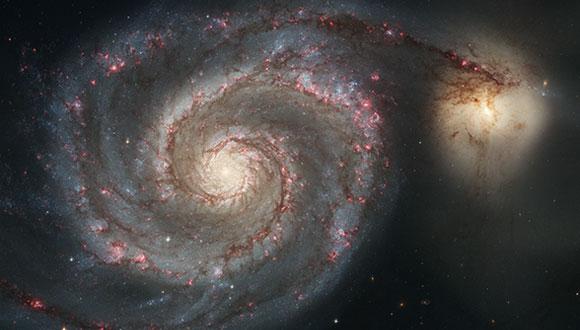Astronomy & Astrophysics Seminar: Binary formation, evolution and gravitational-wave mergers in gas-rich environments
Mor Rozner, Technion
Zoom: https://tau-ac-il.zoom.us/j/87230679135?pwd=Y1duRlArUkJwSnhaaXVscUU0azY3Zz09
Abstract:
Binaries are ubiquitous in various scales and astrophysical systems, from planetesimals to black holes, and play a key role in the dynamics and evolution of stellar systems. I will discuss the formation and evolution of binaries in gaseous environments including gaseous environments of second-generation formation in globular clusters, star-forming regions and AGN disks. I will also discuss the distribution of soft binaries in clusters and wide binaries in the field. In gaseous media, interactions between two initially unbound objects could result in gas-assisted binary formation, induced by a loss of kinetic energy to the ambient gas medium. Here, we derive analytically the criteria for gas-assisted binary capture through gas dynamical friction dissipation. We validate them with few-body simulations and explore this process in different gas-rich environments: gas-embedded star-forming regions (SFR), gas-enriched globular clusters, active galactic nucleus (AGN) discs, and protoplanetary discs. Overall, we show that gas-assisted binary formation is robust and can contribute significantly to the binary formation rate in many environments. In fact, the gas-assisted binary capture rates are sufficiently high such that they will lead to multicaptures, and the formation of higher multiplicity systems. I will discuss gas-assisted mergers, specifically in gas-embedded environments of the second (or further) population of stars in globular clusters. Most globular clusters (GCs) show evidence for multiple stellar populations, suggesting the occurrence of several distinct star formation episodes. The large fraction of second population (2P) stars observed requires a very large 2P gaseous mass to have accumulated in the cluster core to form these stars. Hence, the first population of stars (1P) in the cluster core has had to become embedded in 2P gas, just prior to the formation of later populations. We show that this novel GW merger channel could provide a major contribution to the production of GW sources. Finally, I will describe analytic tools to study the dynamical formation of soft binaries in clusters, and their survival as field binaries following cluster dispersion, comparison to N-body simulations and further implications.
Seminar Organizer: Dr. Jonathan Stern


